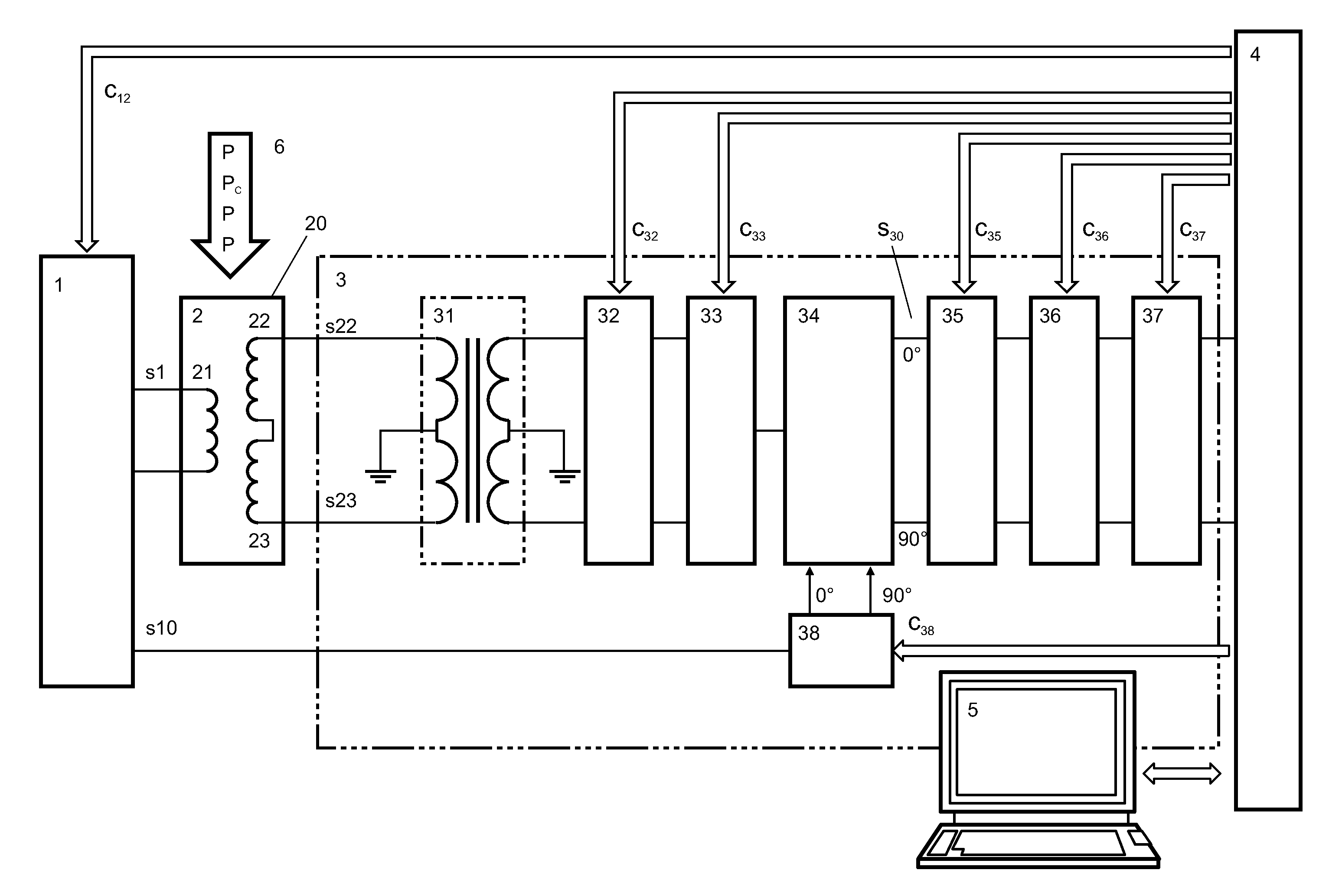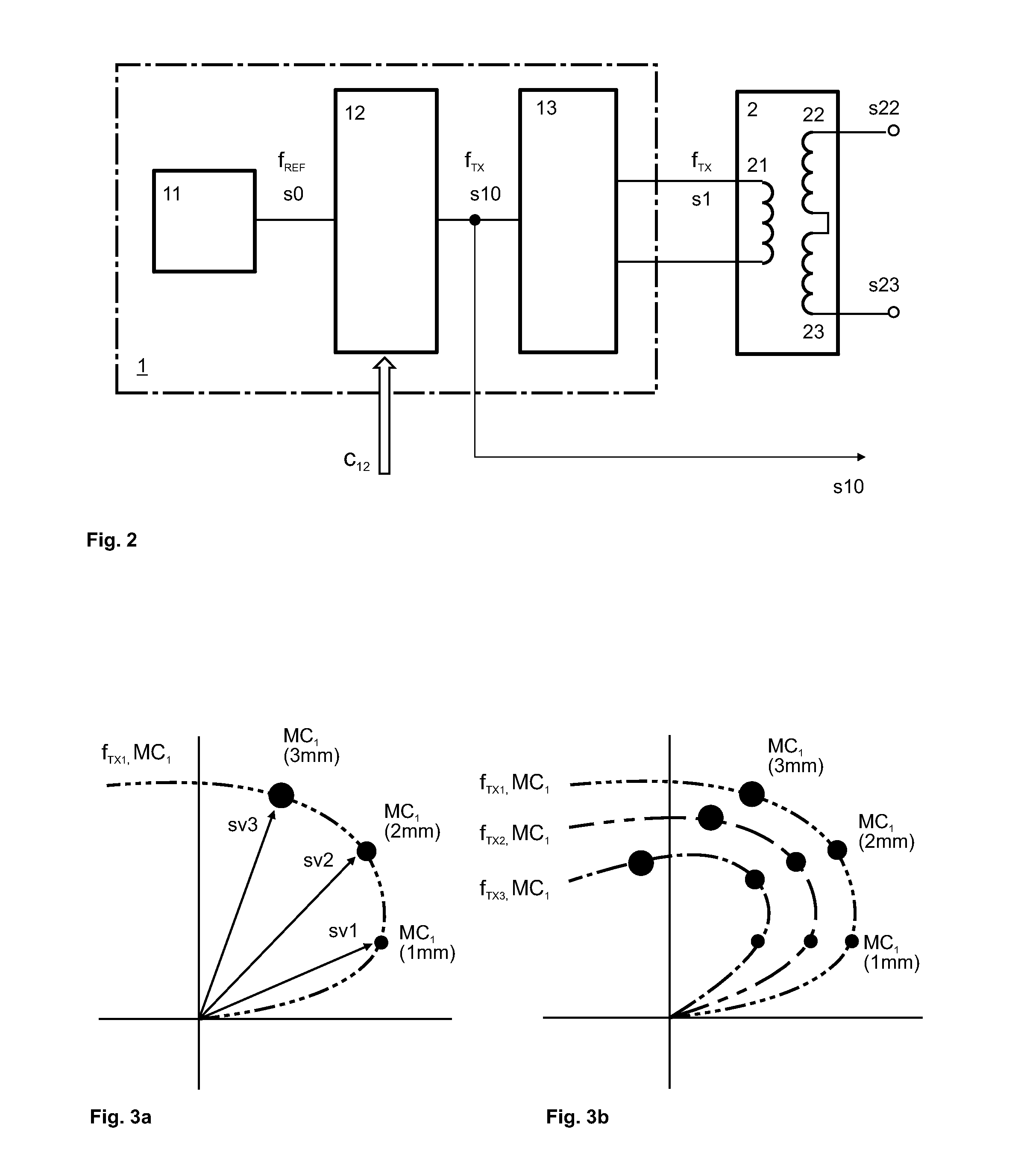Method for operating a metal detection system and metal detection system
a metal detection system and metal detection technology, applied in the direction of magnetic field magnitude/direction, measurement devices, instruments, etc., can solve the problems of insufficient measurement, low efficiency, and considerable effort, and achieve the effect of improving the sensitivity of the metal detection system, reducing efforts, and high efficiency
- Summary
- Abstract
- Description
- Claims
- Application Information
AI Technical Summary
Benefits of technology
Problems solved by technology
Method used
Image
Examples
Embodiment Construction
)
[0048]FIG. 1 shows a block diagram of an exemplary embodiment of a metal detection system, which comprises a transmitter unit 1, a balanced coil system 2 with a transmitter coil 21 and a first and a second receiver coil 22, 23, a receiver unit 3, a signal processing unit 4, and a control unit 5 that comprises standard interfaces, input devices, and output devices, particularly a monitor. FIG. 1 further shows a conveyor 6, on which products P are transferred through the transmitter coil 21 and the receiver coils 22, 23.
[0049]The transmitter unit 1, for which an exemplary embodiment is shown in detail in FIG. 2, provides a transmitter signal s1 to the transmitter coil 21 of the balanced coil system 2. Further, the transmitter unit 1 provides a reference signal s10 having the transmitter frequency fTX to the receiver unit 3.
[0050]In an exemplary embodiment, the transmitter signal s1 induces signals s22, s23 in the identical receiver coils 22, 23 that are of the same magnitude but inve...
PUM
 Login to View More
Login to View More Abstract
Description
Claims
Application Information
 Login to View More
Login to View More - R&D
- Intellectual Property
- Life Sciences
- Materials
- Tech Scout
- Unparalleled Data Quality
- Higher Quality Content
- 60% Fewer Hallucinations
Browse by: Latest US Patents, China's latest patents, Technical Efficacy Thesaurus, Application Domain, Technology Topic, Popular Technical Reports.
© 2025 PatSnap. All rights reserved.Legal|Privacy policy|Modern Slavery Act Transparency Statement|Sitemap|About US| Contact US: help@patsnap.com



